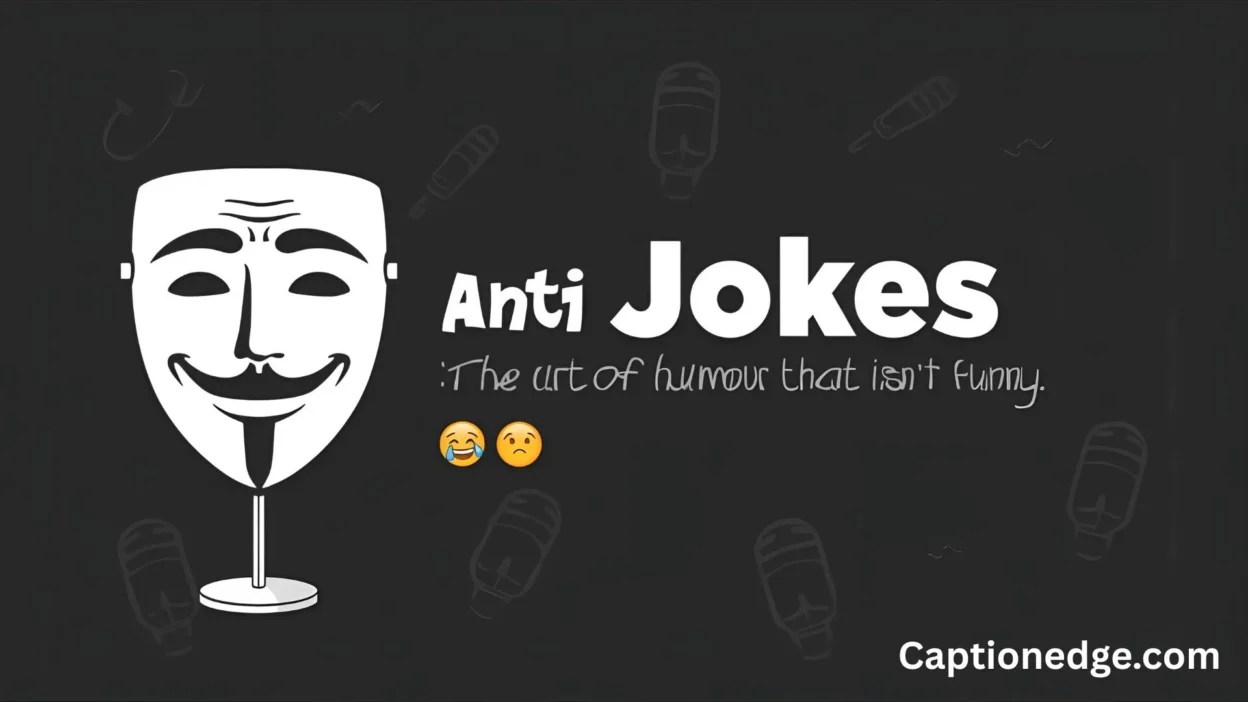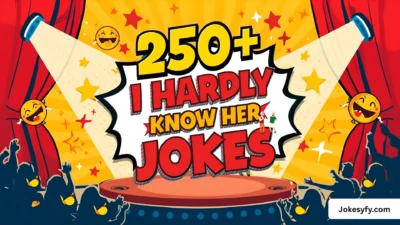Anti jokes represent one of the most fascinating and counterintuitive forms of comedy in existence. These unconventional jokes deliberately subvert traditional humor expectations by delivering punchlines that are intentionally unfunny, overly literal, or completely devoid of the expected comedy. The unfunny jokes that define this genre work precisely because they defy what we typically consider humorous, creating a unique comedic experience that ranges from mildly amusing to brilliantly clever. Unlike traditional jokes that build up to a surprising or witty conclusion, anti-humor sets up a familiar joke structure only to deliver a mundane, logical, or straightforward resolution that catches the audience off guard. This comprehensive guide will explore everything from the basic structure of these jokes to advanced techniques for creating your own, providing you with a deep understanding of why humor that isn’t technically funny can be so remarkably entertaining
What Are Anti Jokes? Understanding the Concept
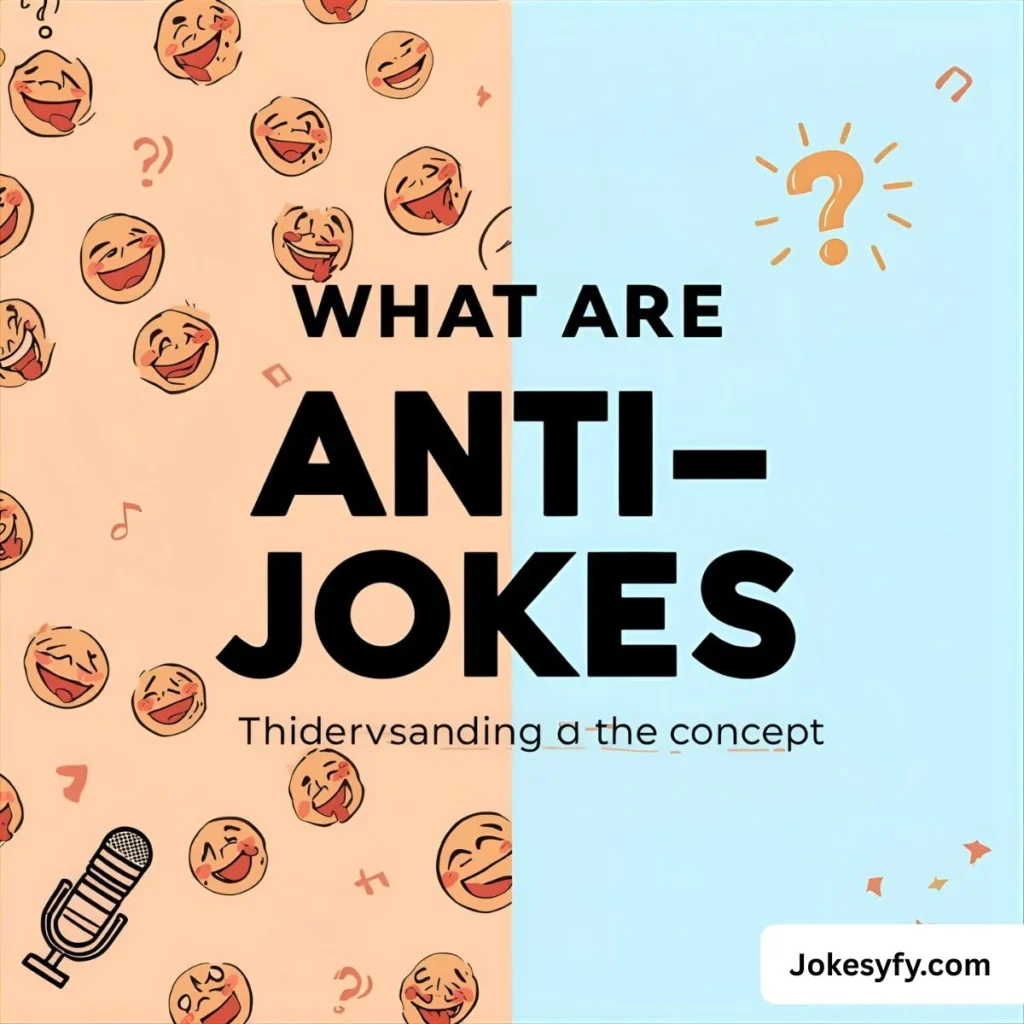
Anti jokes are a specialized form of humor that deliberately violates the established conventions of traditional joke-telling. Where regular jokes rely on surprise, wordplay, or absurdity to generate laughter, anti-jokes derive their appeal from denying these expected comedic elements. The fundamental structure follows the familiar joke format—setup and punchline—but delivers a resolution that is deliberately logical, factual, or mundane rather than humorous. This creates what psychologists call “comedic relief through expectation violation,” where the brain’s anticipation of humor is met with such stark reality that it produces a different kind of amusement.
The psychology behind why people find anti-humor appealing is complex and fascinating. When we hear a joke setup, our brains automatically anticipate a particular type of resolution based on pattern recognition from previous joke experiences. Anti jokes disrupt this cognitive pattern by delivering something completely unexpected yet undeniably true. This violation of expectations can create a unique form of intellectual amusement, even when the content itself isn’t technically funny. The humor doesn’t come from the punchline itself but from the shared understanding between teller and listener that traditional joke conventions are being subverted. This meta-awareness of the joke structure itself becomes the source of amusement rather than the content of the punchline.
The Best Anti Jokes Collection 🤡
- Why are T-Rex’s unable to clap their hands? Because they are extinct.
- What did number 7 say to number 9? Nothing, numbers don’t talk.
- What is red and extremely bad for your teeth? A flying brick.
- What begins with “f” and ends with “uck”? Incorrect. What begins with “w” and ends with “hat”.
- A grasshopper walks into a bar and the bartender says “hey, we have a drink named after you.” The grasshopper replies “What, you have a drink called Steve?”
- What do you call a talking turtle? A cartoon.
- What happens when you cut down a tree? It falls down … what were you expecting?
- What’s a pirate’s favourite letter? One from their family, they probably haven’t seen them in a while.
- How do you raise a child? You lift them up.
- What’s the best thing about a wallet full of money? The money.
- I don’t look anything like my father … Probably because he’s covered in soil.
- What’s white and annoying at dinner? An avalanche.
- What do you call a teacher who gives out too much homework? Horrible.
- What happened to the lost boy when he arrived home? He was no longer lost.
- There are two kinds of people in the world … Dead and alive.
Anti Jokes That Make No Sense 🤔
- What did the German man say to the other German man? I don’t know, I don’t speak German.
- What’s worse than a mosquito bite? Two mosquito bites.
- What do you call an octopus with one eye? An octopus.
- What’s worse than overcooked steak? Death.
- What’s blue and smells like red paint? Blue paint.
- What did the grape say when it got stepped on? Nothing, but it let out a little whine.
- I used to be a banker … But I lost interest.
- Did you hear about the crime that happened in a parking garage? It was wrong on so many levels.
- A hole has been found in the nudist camp wall … The police are looking into it.
- What did the postman say when he misplaced all of his mail? Where’s my mail.
- Why was the dog escorted out of the bar? Because animals weren’t allowed inside.
- How do you make antifreeze? You take away her blanket.
- What do you call a woman who flies a plane? A pilot.
- Why can’t T-Rex clap their hands? Because they’re extinct.
- I’ll never forget what my grandfather said before he kicked the bucket … Hey, want to see how far I kick this bucket?
Dark Anti Jokes 💀

- What’s funnier than having the flu? Most things really.
- What’s brown and sticky? Mud.
- What’s the worst thing about being a woman in the police force? The discrimination.
- Why did the waiter spit in the soup? Because he was an awful waiter.
- Mary had a little lamb … The doctor fainted.
- What is the name of a man who always knows where his wife is? A widower.
- What is worse than finding a worm in your apple? Choking on your apple.
- A man died after eating 300 hot dogs. Don’t eat 300 hot dogs.
- What has 2 thumbs and won’t crap? Me because I am constipated.
- What’s tasty but ugly? A squashed birthday cake.
- What did the lawyer say to the other lawyer? We are both lawyers.
- Why don’t vampires like garlic? Because you have to exist to like garlic.
- What sort of butterfly has beautiful wings but can’t fly? A dead one.
Classic Anti Jokes Format 📝
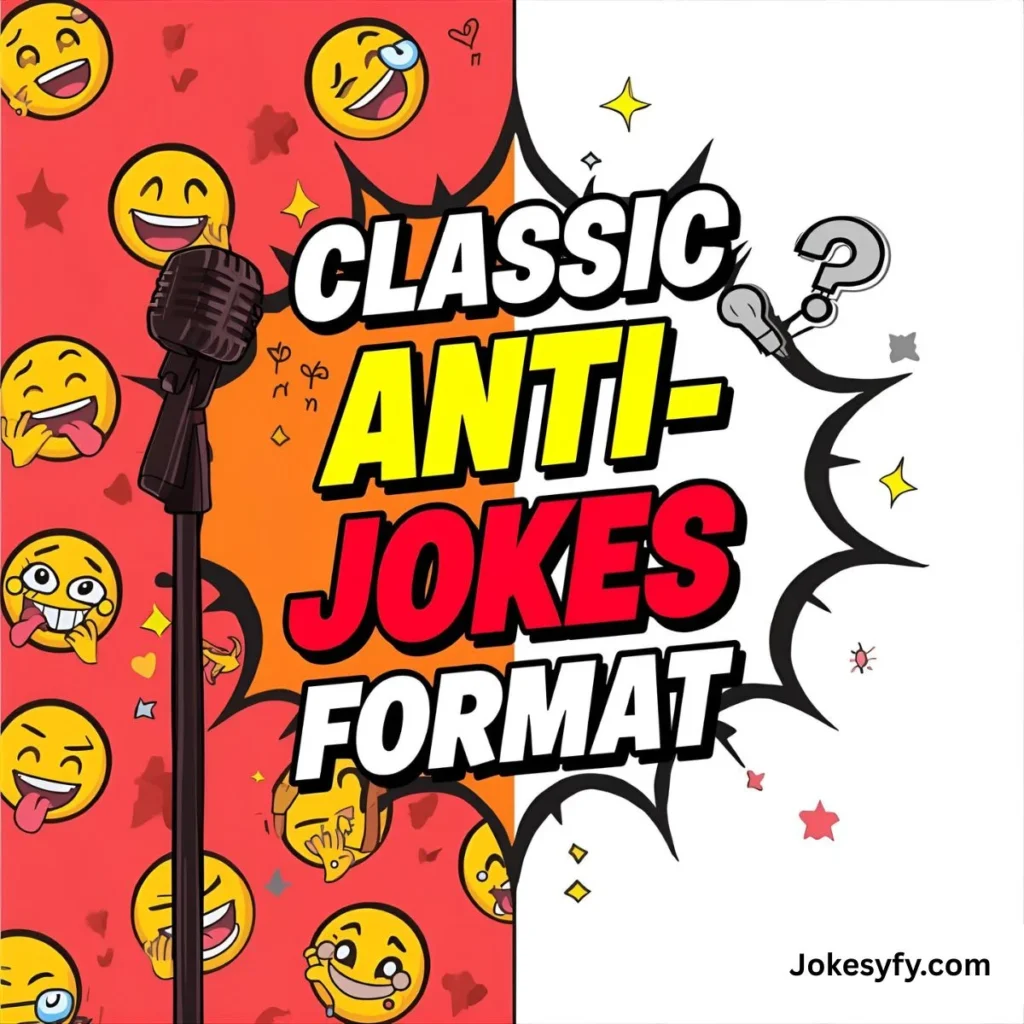
- Why did the chicken cross the road? It was most likely to eat some seeds or lay an egg. Chickens are pretty boring animals and don’t tend to do much else.
- Knock knock. Who’s there? It is a delivery of flowers and chocolate to cheer you up.
- A horse walks into a bar. The bartender says, “why the long face?” The horse, is in no mood for conversation, he promptly turns around and leaves without a word.
- A duck walks into a bar. The appropriate authorities are called and the duck is released into a nearby park.
- Why was six afraid of seven? Numbers are not sentient and thus incapable of feeling fear.
- What happens when you pass your drivers test? You don’t fail it.
- What do you call a cat with no legs? A cat.
- A bartender walks into a bar … He was off work for the night and wanted to enjoy a drink.
- How many introverts does it take to change a lightbulb? One, unless they require assistance for some reason.
- What happens every 60 minutes? An hour passes.
- How did the little girl make the cake? With ingredients.
- What do you get if you take your age and add five years to it? Your age plus five years.
- How do you get rid of a cold? Turn the heating on.
- What did the little boy do in the cold weather? He put his coat on.
Anti Jokes for Various Occasions 🎉
Social Gatherings and Parties:
- What do you call someone dressed as a clown who falls down the stairs? An ambulance.
- Want to hear a joke about the end of the world? Yeah, me neither.
- What’s a ghost’s favourite meal? There isn’t one because ghosts aren’t real.
- What’s a pirate’s favourite letter? There isn’t one, scientists believe most pirates were probably illiterate.
- What do you call cheese that isn’t your cheese? Stolen cheese.
Workplace Appropriate:
- What do you call an awful thief named Tom who goes around scaring kids and the older? Tom.
- What did one bear say to the other? Nothing, bears can’t talk.
- What’s the capital of Great Britain? London.
- I heard a really funny joke today … But I can’t remember it now.
- What do a dog and an apple have in common? Not much actually.
Family-Friendly Options:
- Why don’t you put toast in the bathtub? Because it will get soggy, ew.
- Why did the woman carry an umbrella with her? Because she thought it was going to rain.
- What do you get when you mix pineapple and melon? A pineapple and melon fruit salad.
- What happens when you fill your shoe with water? The shoe gets wet.
- Why did the old man go to the beach? Because he felt like it.
How to Create Your Own Anti Jokes ✏️
Creating effective anti jokes requires understanding the fundamental principles that make this humor style work. The process begins with recognizing common joke structures that people are familiar with, then subverting the expected payoff with something literal, logical, or mundane. Start by identifying classic joke formats—knock-knock jokes, “why did the chicken cross the road” style queries, or common “what do you call” structures. These familiar setups create strong expectations in your audience, which is crucial for the anti-joke to work effectively.
The key to successful anti-humor lies in the delivery and timing. When telling an anti-joke, maintain a completely straight face and deliver the punchline with the same earnestness as stating a simple fact. The contrast between the audience’s expectation of a traditional punchline and your serious delivery of an utterly mundane statement creates the comedic effect. Remember that the humor doesn’t come from the content itself but from the shared understanding that joke conventions are being deliberately subverted. Practice varying your approach—some anti-jokes work best with logical conclusions, others with factual statements, and some with deliberately disappointing resolutions that acknowledge the absence of humor.
Why Anti Humor Appeals to Different Personalities 🧠
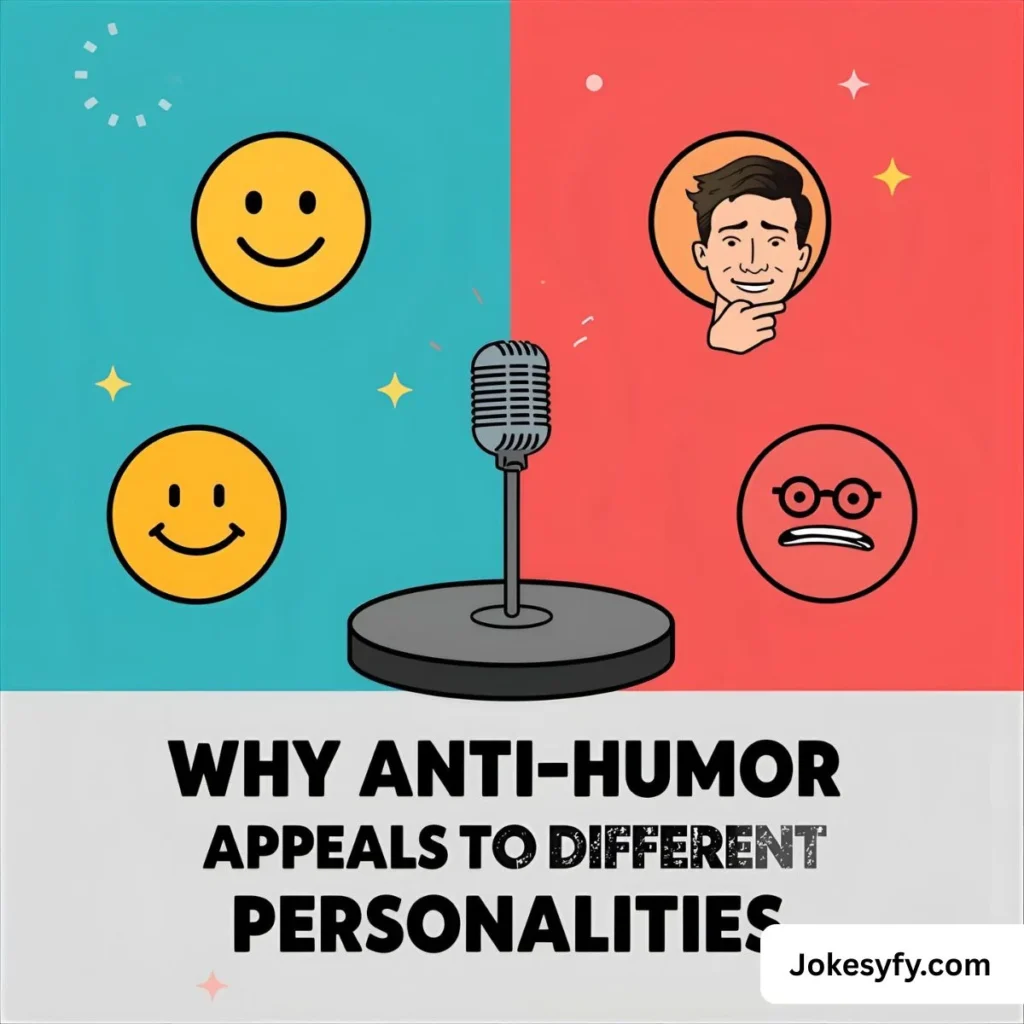
The appeal of anti jokes varies significantly across different personality types and cognitive styles. People with analytical minds often appreciate the logical structure and meta-commentary on traditional joke formats. The anti-joke’s subversion of expectation appeals to those who enjoy deconstructing systems and understanding how things work, including humor itself. Similarly, individuals who identify as introverts or highly sensitive people may find anti-humor more appealing than traditional jokes because it doesn’t rely on loud, surprising, or potentially offensive content.
From a psychological perspective, anti-humor provides a unique cognitive experience that differs from traditional comedy. When our brain encounters a joke setup, it automatically begins predicting potential punchlines based on previous experience. Anti-jokes disrupt this pattern recognition process by delivering something completely unexpected yet undeniably valid. This violation of expectations creates a different kind of amusement that many find intellectually satisfying. Additionally, in an era of increasingly sophisticated and complex humor, the sheer simplicity of anti-jokes can be refreshing. The straightforward nature of this humor style offers a palate cleanser from the constant pursuit of wit and cleverness that characterizes much of modern comedy.
Using Anti Jokes in Everyday Life 🗣️
Anti jokes can be surprisingly versatile in social situations when used appropriately. In conversation, they work well as icebreakers among people who appreciate unconventional humor or as a way to lighten the mood without resorting to traditional comedy. When someone expects a typical joke and receives an anti-joke instead, it often creates a memorable moment that stands out from ordinary social interactions. The key is to read your audience and recognize when anti-humor will be appreciated versus when a more traditional approach might be better received.
The delivery of unfunny jokes requires particular attention to context and timing. In professional settings, anti-jokes can be effective because they’re typically clean and inoffensive, avoiding the potential pitfalls of more edgy humor. When meeting new people, they can serve as an interesting conversation starter about humor itself. With friends and family who understand your sense of humor, anti-jokes become a shared language that reinforces your relationships. The best approach is to start with milder examples and gauge reactions before committing to a full anti-humor routine. Remember that the goal isn’t necessarily to generate loud laughter but to create a more subtle, intellectual amusement that can be equally bonding.
Anti Jokes vs Traditional Jokes: Key Differences 🔍
Understanding the fundamental differences between anti jokes and traditional humor helps clarify why each produces distinct reactions. Traditional jokes typically rely on surprise, incongruity, or superiority to generate laughter. They follow established patterns where the setup creates an expectation and the punchline delivers an unexpected twist that resolves the tension humorously. In contrast, anti-humor uses the same setup structure but delivers a punchline that deliberately fails to provide the expected comedic resolution, creating humor through the absence of humor itself.
The cognitive processing of these two humor forms differs significantly. With traditional jokes, the brain recognizes the pattern, anticipates a humorous resolution, and experiences pleasure when the punchline delivers that expected humor, often through unexpected means. With anti jokes, the brain similarly recognizes the pattern and anticipates humor, but instead receives a logical, factual, or mundane statement. This creates a different kind of cognitive response—the amusement comes from recognizing the deliberate subversion of comedic conventions rather than from the content itself. The satisfaction is more intellectual than emotional, appealing to those who appreciate meta-commentary and pattern disruption.
Common Mistakes When Telling Anti Jokes ❌
Even experienced joke tellers can stumble when delivering anti jokes if they overlook some crucial elements. One of the most common errors is signaling that you’re telling an anti-joke before you begin, which completely undermines the element of surprise that makes this humor form effective. The power of anti-humor lies in the audience’s genuine expectation of a traditional punchline, so maintaining the pretense that you’re telling a regular joke is essential. Similarly, breaking character during delivery by smiling or acknowledging the joke’s nature can diminish the impact.
Another frequent mistake is choosing inappropriate contexts for unfunny jokes. While anti-humor can be brilliant in the right setting, it often falls flat when the audience isn’t in the mindset for unconventional comedy or when they have strong expectations for traditional humor. Additionally, some tellers undermine their anti-jokes by apologizing for them or explaining the concept afterward. The effectiveness relies on the audience processing the subversion independently—over-explaining eliminates the intellectual satisfaction that comes from recognizing the pattern disruption themselves. Finally, varying your anti-joke repertoire is crucial; repeating the same structure multiple times allows audiences to adjust their expectations, reducing the impact of the subversion.
The History and Evolution of Anti Humor 📜
While anti jokes may seem like a modern comedic trend, the concept of subverting humor expectations has existed for centuries. Early forms of anti-humor can be traced to philosophical traditions that questioned conventional thinking patterns, including those related to comedy and rhetoric. However, the formalization and popularization of anti-jokes as a distinct comedic category gained significant momentum in the late 20th century, particularly with the rise of postmodern art forms that deliberately played with and subverted established conventions.
In recent decades, anti-humor has experienced a notable resurgence in digital culture and internet communities. The straightforward, often dry delivery of anti-jokes aligns well with certain online communication styles, particularly in text-based formats where their deadpan nature can be effectively conveyed. Social media platforms have further accelerated the spread and evolution of anti-humor, with dedicated accounts and communities sharing new variations and categories. This digital renaissance has led to the development of increasingly sophisticated forms of anti-comedy that play with multiple layers of expectation and subversion, pushing the boundaries of what qualifies as humor in fascinating new directions.
Frequently Asked Questions About Anti Jokes ❓
What exactly is an anti-joke?
An anti-joke is a type of humor that deliberately subverts traditional joke conventions by delivering a punchline that is intentionally unfunny, overly literal, or factual. The humor comes from violating the audience’s expectation of a traditional punchline, creating amusement through the absence of expected humor rather than its presence.
Why do people find anti-jokes funny?
People find anti jokes amusing due to the cognitive process of expectation violation. When our brain anticipates a traditional punchline but receives something logical or mundane instead, it creates a unique form of intellectual amusement. The humor doesn’t come from the content itself but from the shared understanding that joke conventions are being deliberately subverted.
Are anti-jokes suitable for all audiences?
Anti-humor is generally suitable for most audiences since it typically avoids offensive or controversial content that might appear in traditional jokes. However, the appreciation of anti-jokes requires understanding traditional joke structures to recognize how they’re being subverted, which might make them less effective with very young children or those unfamiliar with conventional humor patterns.
What’s the difference between anti-jokes and dad jokes?
While both anti jokes and dad jokes often feature straightforward or literal thinking, they differ in fundamental ways. Dad jokes typically employ wordplay or puns and still aim to be traditionally humorous, while anti-jokes deliberately avoid conventional humor entirely. Dad jokes try to be funny through cheesy wordplay, while anti-jokes derive their appeal from not trying to be funny at all in the traditional sense.
How can I make my own anti-jokes?
Creating effective anti jokes involves starting with familiar joke structures and replacing the expected punchline with something logical, factual, or mundane. Identify common joke formats and consider what literal, obvious, or academic response would subvert the expected humor. The key is maintaining the setup’s familiar structure while delivering a punchline that deliberately disappoints the expectation of traditional humor.
Conclusion: The Unique Appeal of Anti Humor 🌟
Anti jokes represent a fascinating corner of the comedy world where humor emerges from the deliberate absence of traditional comedy. These unfunny jokes have carved out a unique space in modern humor by appealing to our love of pattern recognition and cognitive surprise. While they may not generate the boisterous laughter of traditional jokes, they offer a more intellectual form of amusement that continues to grow in popularity. The enduring appeal of anti-humor lies in its ability to make us reconsider what we find amusing and why, turning the very structure of comedy into the source of entertainment itself. Whether you’re a seasoned anti-joke enthusiast or new to this unconventional humor form, there’s no denying the unique charm of comedy that derives its power from not being traditionally funny at all.

I am Charles K Baxter, a humor enthusiast passionate about spreading joy and positivity through laughter.

